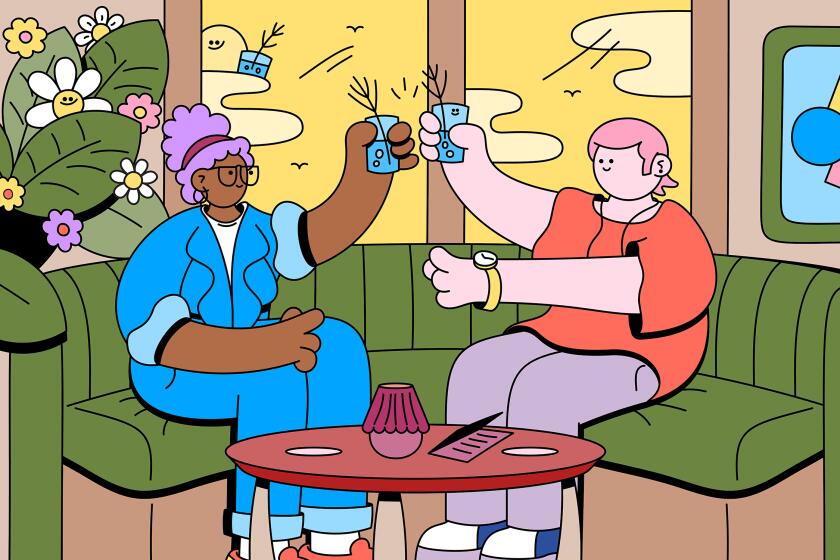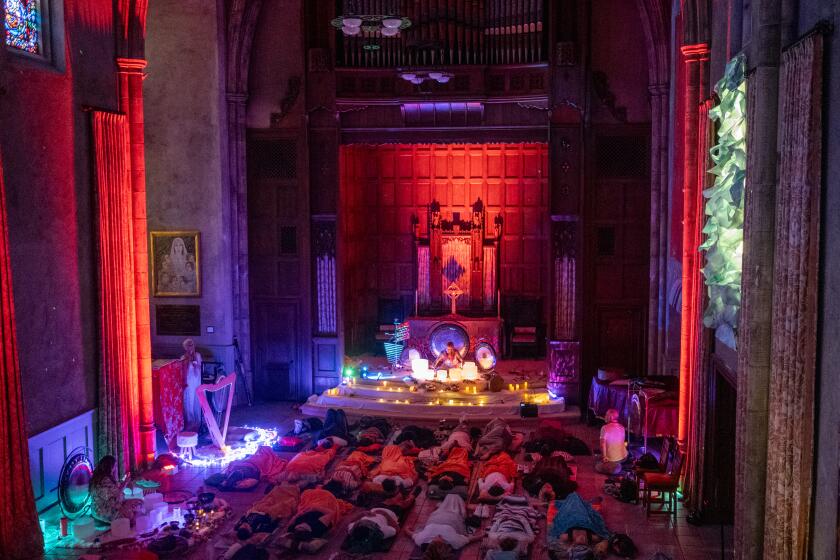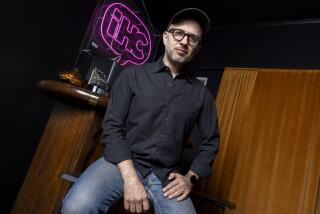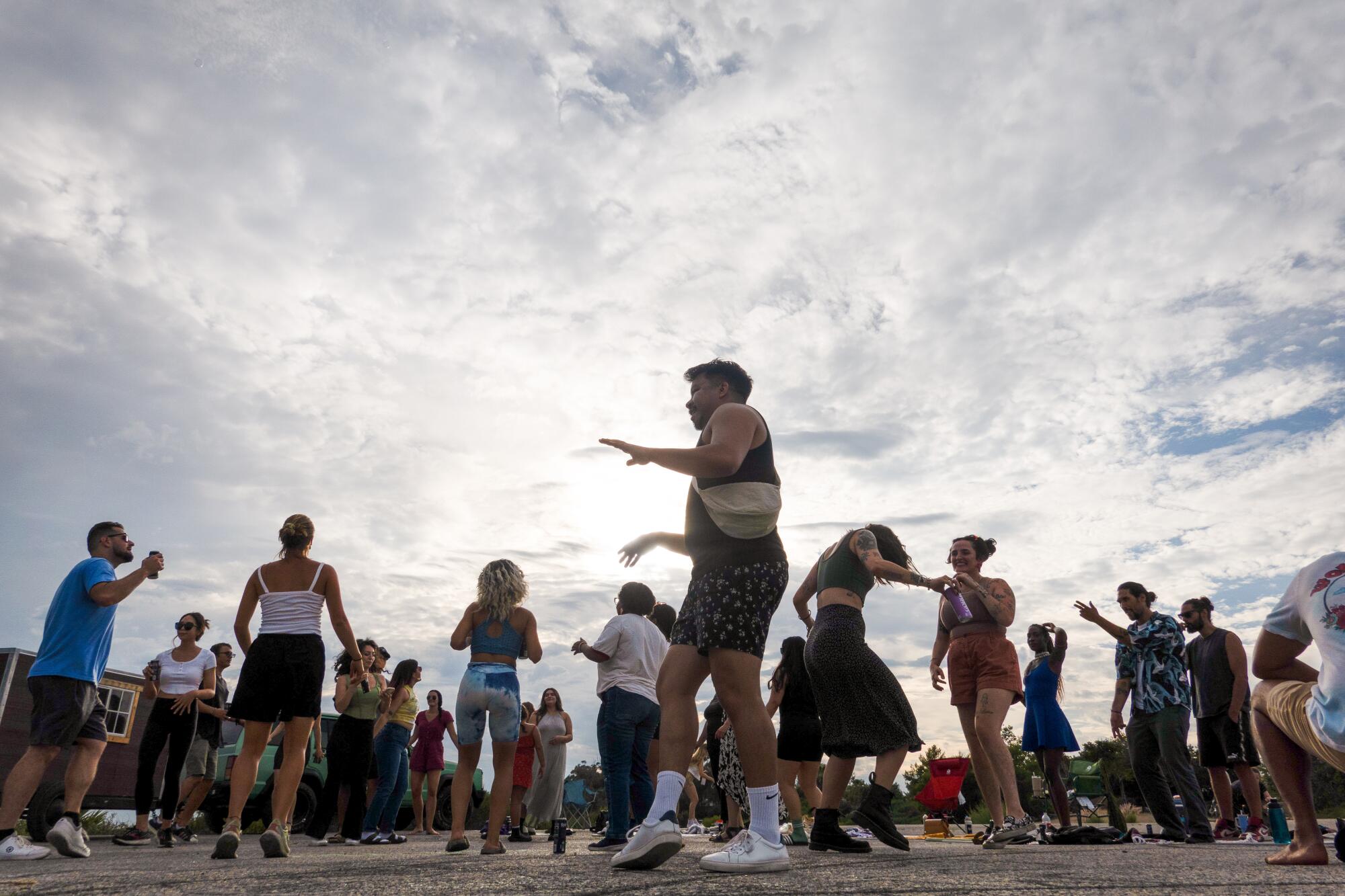
- Share via
In the crests of Elysian Park overlooking Dodger Stadium and downtown L.A., a group has formed a makeshift dance floor on an asphalt plateau tucked away from the park’s dusty trails and grassy hills. Funky soul music flows from two standing speakers as a DJ mixes on digital turntables between them. Everyone dances with abandon, jumping from side to side, twirling and stretching their arms overhead to salute the high afternoon sun. At one point, they link elbows and dance-skip in a joined circle.
Flanking the dance floor are guests grazing on free cheese pizza from Pizzanista and swigging from slim cans of Roxie, a zero-proof mocktail. Others glug from reusable jugs they’ve brought from home, but unlike your typical club or concert, nobody’s bottle is secretly stashed with booze. The air, too, remains noticeably clear of the cannabis smoke that regularly perfumes L.A. gatherings. Though many of the participants embody the brazen confidence that alcohol can induce, everyone here remains completely sober.
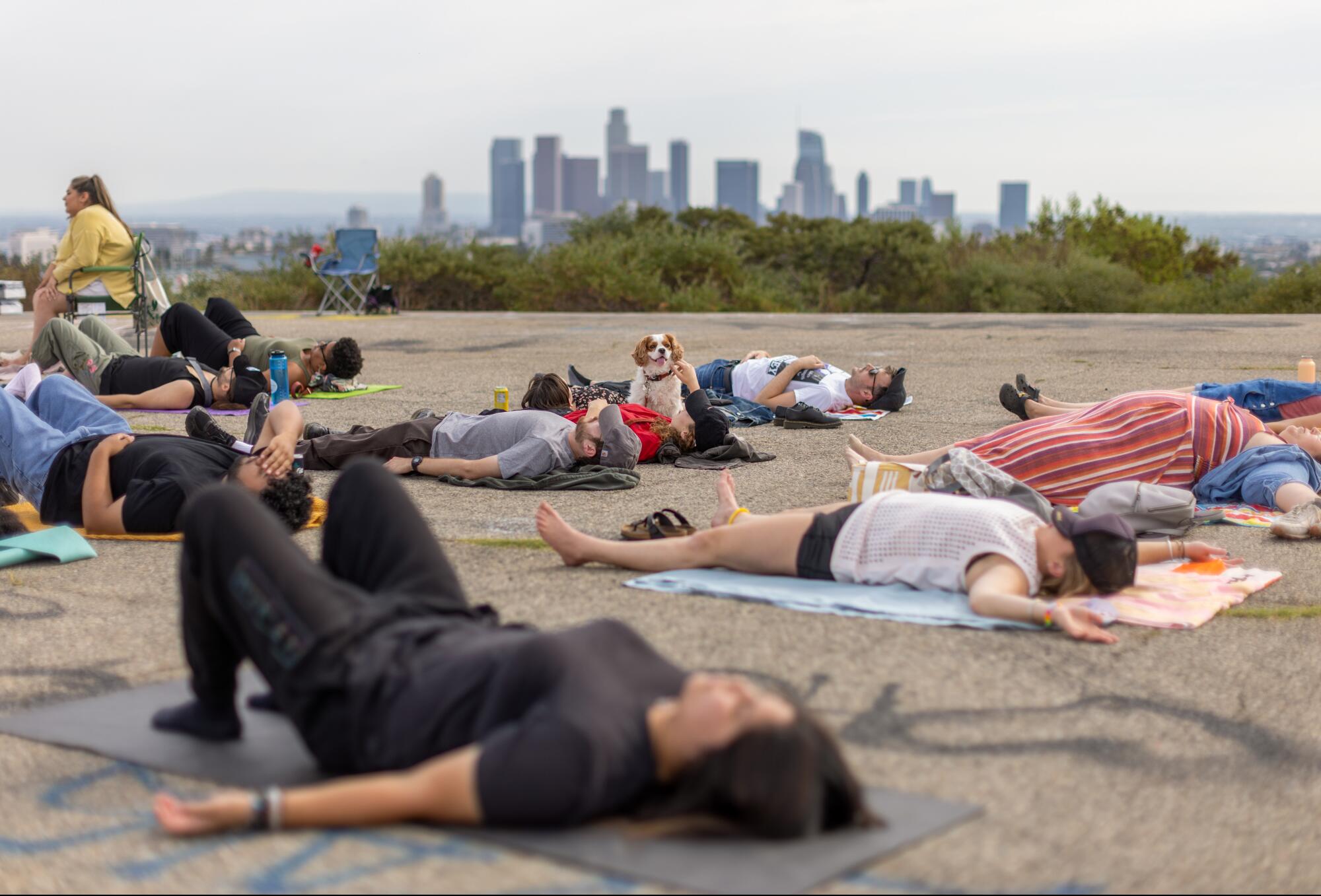
This is Natural High, a renegade alcohol- and substance-free dance party that pops up in outdoor spaces around the city. Hosted by Adam Weiss, the DJ bobbing between the speakers, Natural High grew organically from a weekly meditation and gratitude group that Weiss started during the pandemic, and belongs to a larger, growing trend of substance-free events.
“In L.A., a lot of people are doing things where it’s about getting high or getting really drunk and those things are good for some people, but that’s not my personal choice,” said Alice Moon, an Echo Park resident who has been attending Weiss’ wellness events for more than a year. “It’s nice to be in an environment where sobriety is welcomed.”
Looking for mocktail options for the new year? Check out these Los Angeles spots that focus on nonalcoholic cocktails or the ingredients for at-home pours.
Alcohol consumption increased during the pandemic, but in its aftermath fewer adults are drinking, with many being more mindful when they do. A 2021 Gallup poll revealed that 60% of American adults drink alcohol, down from 65% in 2019. The same poll revealed that even among those who consume alcohol, overindulgence is less common, with surveyors recording an average of 3.6 alcoholic drinks consumed per week, representing the lowest recorded average number of weekly drinks since 2001.
Leading the charge is Gen Z, which is drinking an average of 20% less than millennials, according to a report by Berenberg Research, and more likely to prioritize taste over getting a buzz. With Gen Zers reaching legal drinking age and entering nightlife spaces for the first time, event organizers and the nonalcoholic beverage industry are adjusting to accommodate those habits. Thus far, the shift has proved fruitful: In 2022, the non- and low-alcoholic beverage industry surpassed $11 billion in market value.
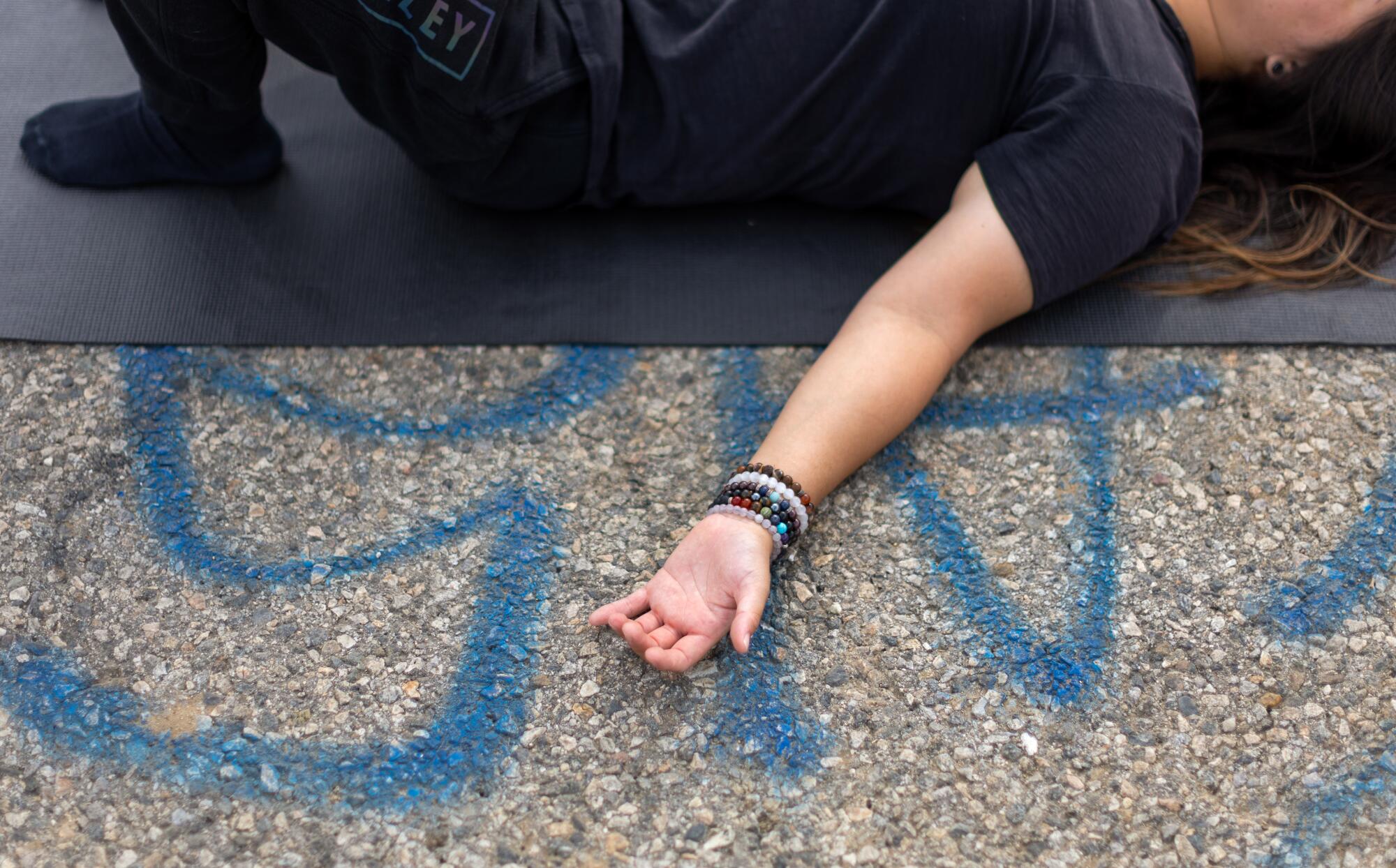
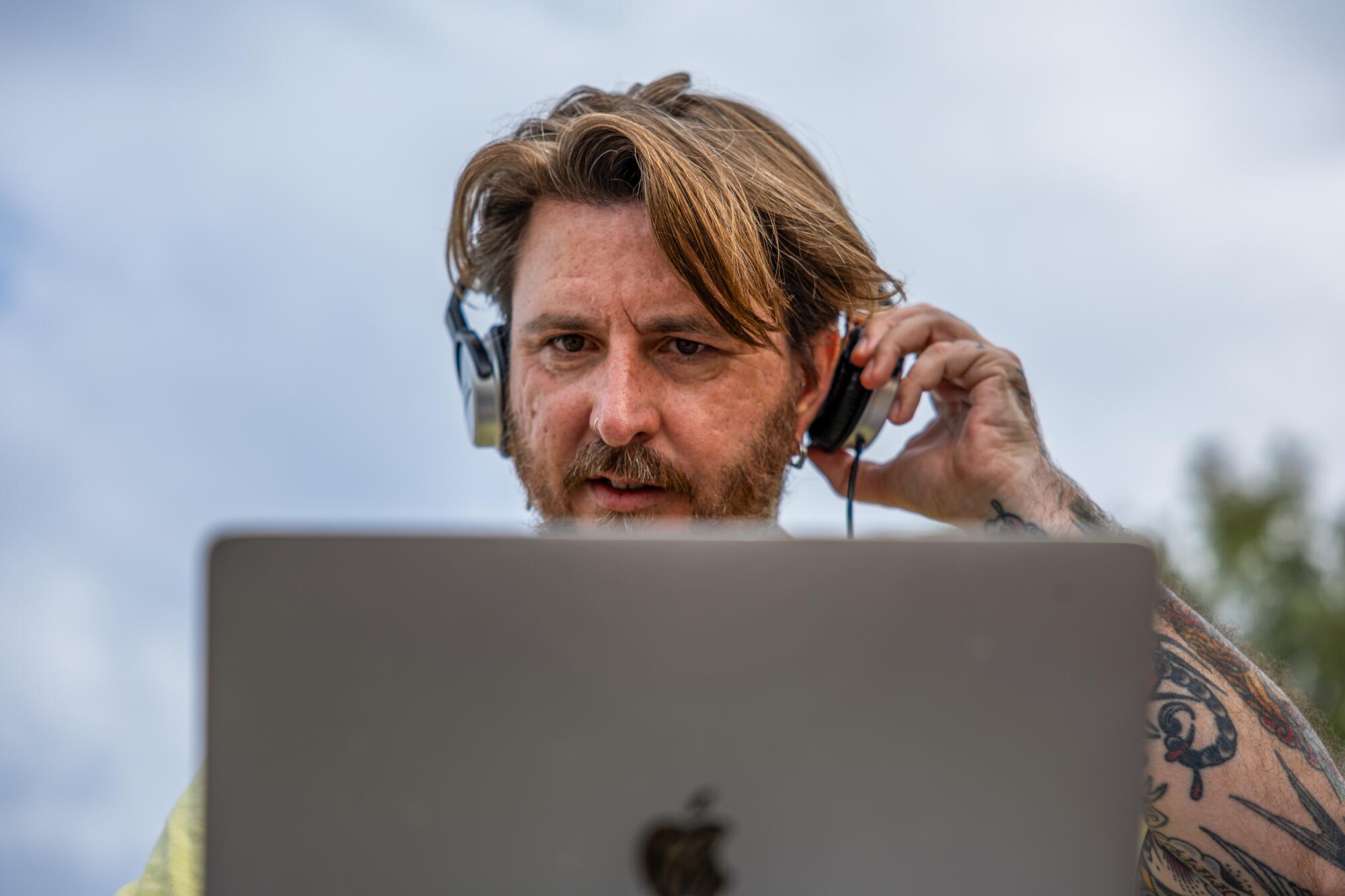
“Besides bars, there’s no other place for us to socialize. We had to create something,” said Courtney Miller, who along with Brandon Darnell co-founded Superbloom Collective, which hosts donation-based, substance-free dance parties in Santa Monica, along with yoga and movement workshops.
Weiss thinks the recent changes in drinking habits reflect a deeper trend. “It’s been a gradual thing,” he said. “People are more into self-care and aware of mental health and part of that is being intentional and mindful. Even going to parties, people go because they want to connect. I think the permission to connect without being inebriated is attractive to people.”
When Radha Agrawal founded the early-morning dance party Daybreaker, the goal was to rebrand sobriety while bringing in elements of nightlife culture, such as community and self-expression.
“So many of these sober events can feel like a sober event, you know?” Agrawal said. “We really wanted to reinvent the word and concept as being present, mindful and connected, here and now. But we still wanted it to taste, smell and feel like nightlife. So it’s a dance party. It’s colorful, people dress up. It’s held in these wild, playful, beautiful spaces.”

Sound baths are everywhere in Los Angeles, even in churches. Here’s what it’s like to experience the singing bowls and gongs in grand, acoustic settings.
The first Daybreaker was held in a basement coffee shop in New York’s Union Square on the first December snowfall in 2013. The next year, parties popped up in San Francisco. The year after that, the project was invited to South by Southwest in Austin, Texas, and across the pond to London. To date, Daybreaker has partied with over 500,000 people of all ages across 33 cities in all seven continents. This year, the booze-free dance party is celebrating its 10th anniversary with a “Together Tour,” which includes a stop in Los Angeles on Oct. 7.
“So much of nightlife is escapist culture,” Agrawal said. “It’s ‘I want to get out of my stressful day, my stressful relationship.’ Daybreaker is this idea of returning to yourself rather than escaping yourself.”
For first-time attendees, education is paramount. Instead of using substances, Agrawal encourages participants to “dose” themselves — a Daybreaker acronym that stands for dopamine, oxytocin, serotonin and endorphins — on the hormones and neurotransmitters that are released naturally when we do things like wake up with the sun, dance to music we love and connect with a larger community.
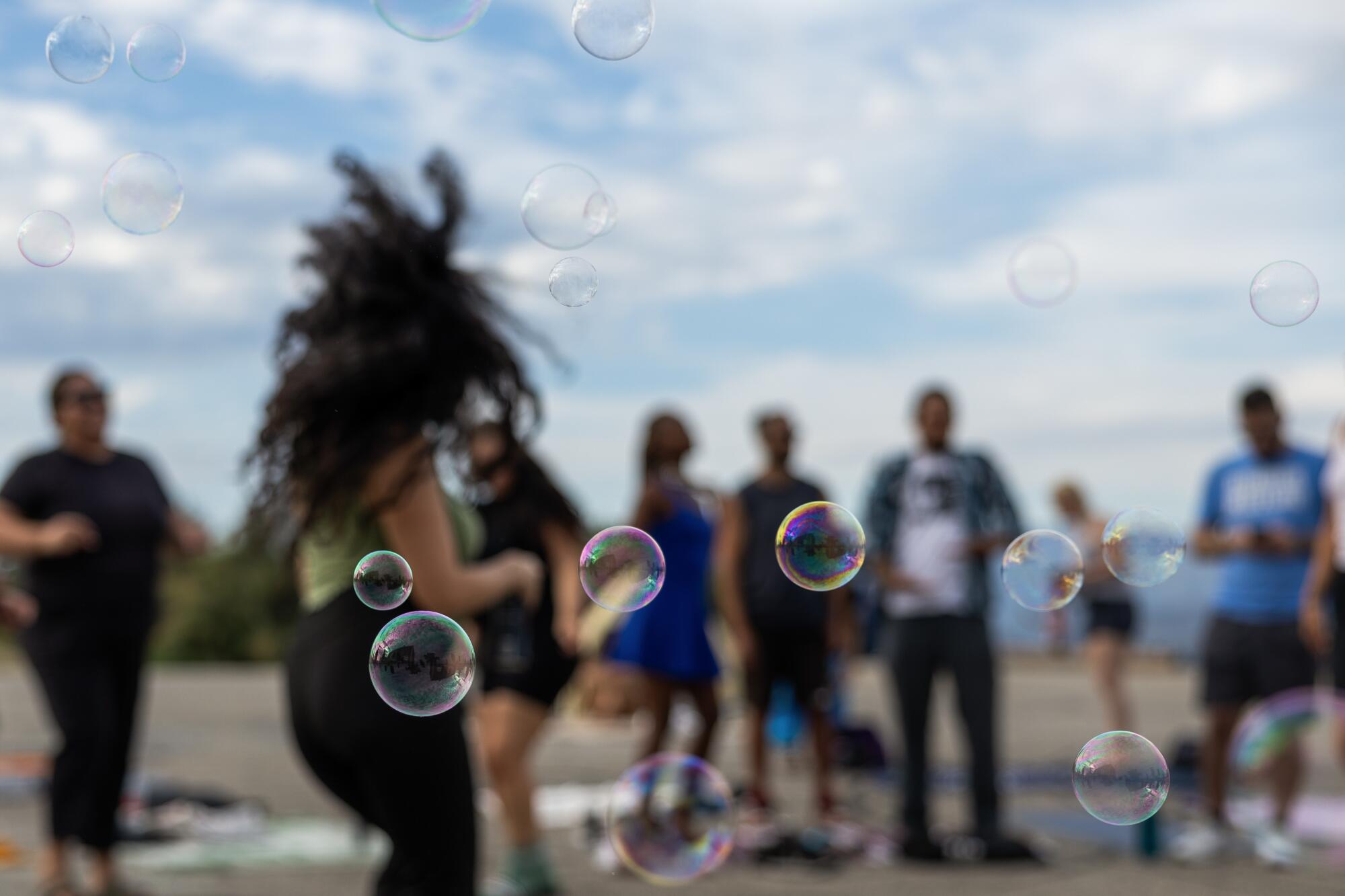
“It’s like, how can I help each community member release their ‘dose’?” Agrawal said. “And if I do, they’ll come back and tell 10 of their friends. That’s how we grew the movement across the world.”
Not every sober dance party takes such a scientific approach to sharing the benefits of booze-free socializing, but Natural High, Superbloom Collective and other alcohol-free pop-ups like Ecstatic Dance in Venice help newcomers get comfortable by beginning their events with centering activities like meditation, stretching, breathwork or somatic movement.
“When we really started asking ourselves what the reason was to go out, it was like: I like dancing. I like meeting people authentically. I like having deep conversations. I like having fun and letting my guard down a little bit,” Darnell explained.
Over time, he discovered that doing breathwork or a fitness class could get him in the mind-set to do exactly that, to feel good, hear the music and simply let go.
More to Read
Sign up for The Wild
We’ll help you find the best places to hike, bike and run, as well as the perfect silent spots for meditation and yoga.
You may occasionally receive promotional content from the Los Angeles Times.
